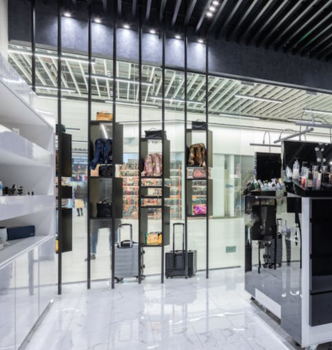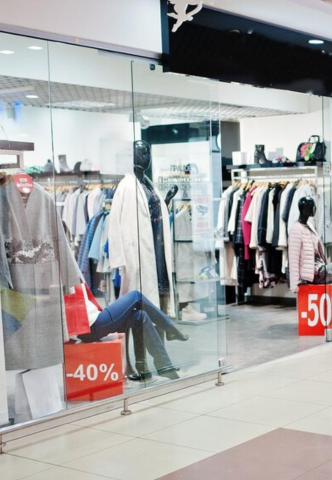

Main Content



Airport retailing is seen as an accessible and simple option for passengers because it provides a large range of goods. Due to the early check-in deadlines set by airlines, travellers now spend more time in airports. The retailer's ability to efficiently sell things has increased as a result. The increased foot traffic, where each traveller must pass hundreds of stores each time, is another benefit of airport commerce. By choosing the correct products and determining the proper stock level for each shelf, retailers may boost foot traffic. Hence, planogram software can be used to properly plan the selection for airport shopping.
A visual merchandising tool called a planogram aids businesses in strategically designing and positioning their store shelves. The airport is open 365 days (about 12 months) a year, unlike other retail establishments, so it is safe to assume that weekend and holiday sales will not be significantly lower. Retail sales in airport terminals have surged as a result of this. Moreover, hotels, nursing homes, vehicle rental agencies, banks, exchange offices, pharmacies, and other shops offering jewellery, books and magazines, gifts and crafts, apparel and accessories, convenience stores, eyeglasses, and fragrances might be considered to be part of the airport retail sector.
A lot of qualities are necessary for airport retailing to operate effectively. For example, a store needs to be accessible and in a good location. Also, a broad range of products and enhanced customer service may pique travellers' interest at airports. Nonetheless, the amount of customers travelling through the airport and whether it is a domestic or international airport have a significant impact on the variety and quality of goods offered at airport shops. Retailers can get a number of advantages by opening a location at an airport. Brand awareness and recognition are the most crucial factors.
An surge in travellers is fueling the airport retailing industry, especially in nations with robust public transportation systems like China and India. The desire of travellers to purchase on the fly and retailers' increasing capacity to sell goods are both driving growth in the airport retailing sector. Airlines' early check-in hours imposed owing to operational and security concerns have also increased the amount of time passengers spend at airports. Retailers may now sell goods more effectively as a result.


More disposable money among consumers in developing nations has allowed major retailers to set up shop in airports. Between leaving the security immigration stations and boarding the plane, people tend to shop the most. Airports work to shorten the waits in the security, immigration, and check-in lines in order to make the most of this window of opportunity. Passengers are encouraged to purchase at airport retail establishments by a variety of crucial considerations, including reasonable costs and the availability of well-known brands at discounted prices.
Retailers carry out comprehensive research to gather information on flight schedules, passenger count, and location in order to compete effectively in the market and provide value offers. The data is anticipated to help merchants manage their warehouses, implement price-cutting plans, and carry out marketing campaigns to expand their clientele. Industry participants are implementing distinctive tactics to raise client happiness.The top retailers in the airport industry are still concentrating their efforts on giving customers an excellent shopping experience. Industry leaders are concentrating their efforts on collecting crucial travel data from different airports in order to evaluate passenger attitudes and behaviour and discover high-spending consumer groups arriving at different airports. Airport retailing vendors are being encouraged to offer goods delivery services due to the growing importance of consumer convenience and the shopping experience. For instance, Frankfurt Airport's airport merchants offer home delivery services to travellers who make purchases through the airport's online shopping portal.




Airport retailing suppliers can give more convenience to clients by giving a variety of product delivery alternatives by integrating such online purchasing platforms. Retailers are still fighting to take a better foothold in the airport retailing sector despite recent good improvements in the industry. Leading market players claim that customer models for airport retailing that are successful in busy airports may not be successful at less busy airports. Market participants still struggle to draw more customers into airports at unreliable and under-traveled tourist destinations because of the e-commerce sector's rapid expansion. In order to boost sales at less frequently used airports, vendors in the airport retailing market are concentrating on distinctive end-user requirements. Students studying retail management benefit from a certificate programme where they can develop their sales, personnel, customer service, and cash management skills. The student has additional employment options and the potential for a greater wage thanks to these enhanced abilities. After the course is over, placement assistance will also be given.
The largest business disruption to hit airport shops since the industry's creation is coming, and it will quickly change who the winners and losers are. Traditional airport shopping will be completely transformed by digital technologies by 2025, opening the way for omnichannel sales—the seamless integration of online and offline purchasing—and the larger retail industry.
Although that's a significant move, it only represents half of what the sector must adapt to. Airport shops need to modify both what they sell and how they sell if they want to survive in the upcoming ten years. Traditional airport goods and services are becoming less popular as the percentage of younger, less affluent visitors (Gen Y and Z) rises.